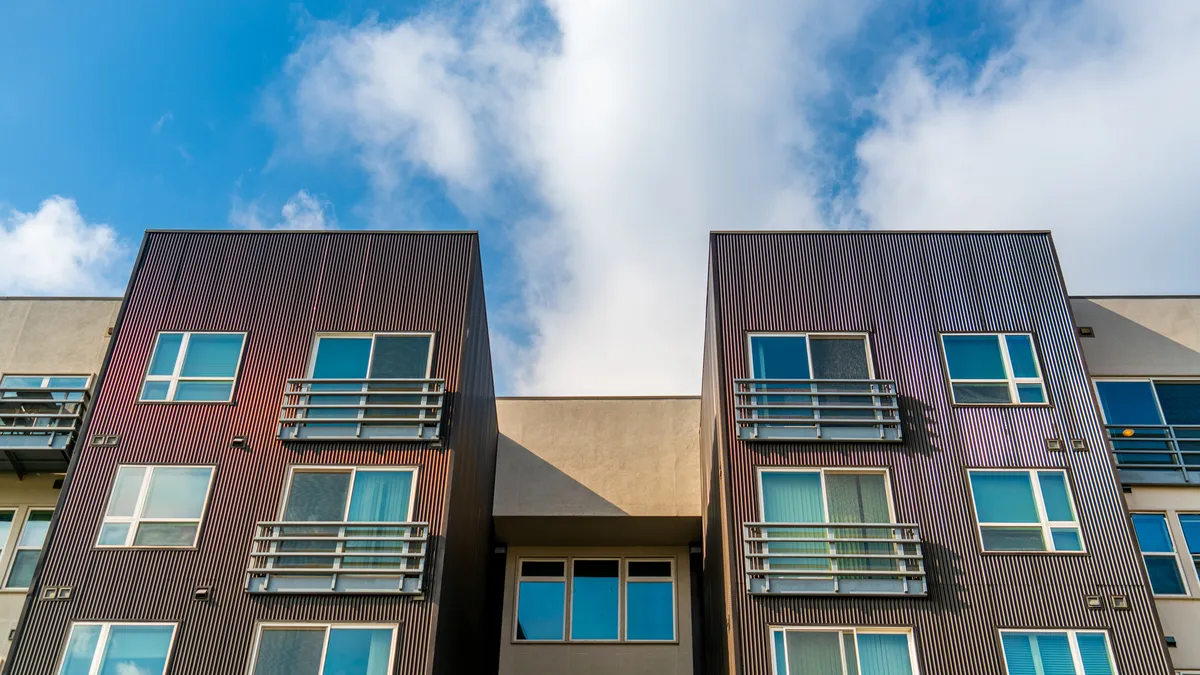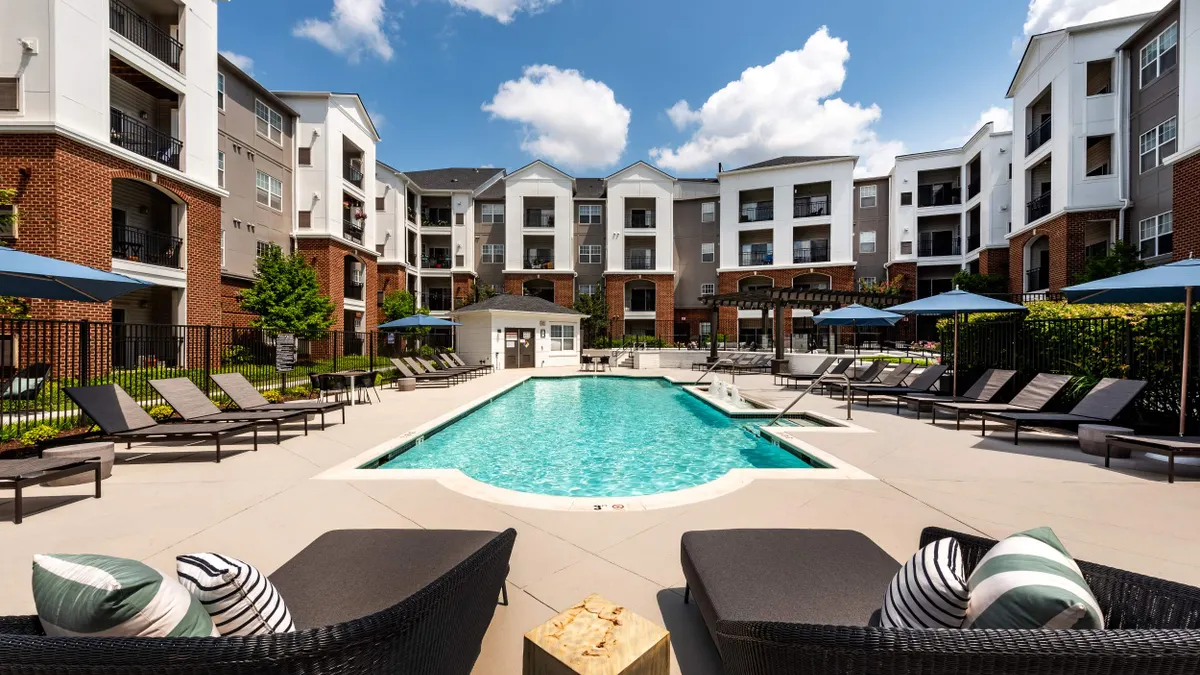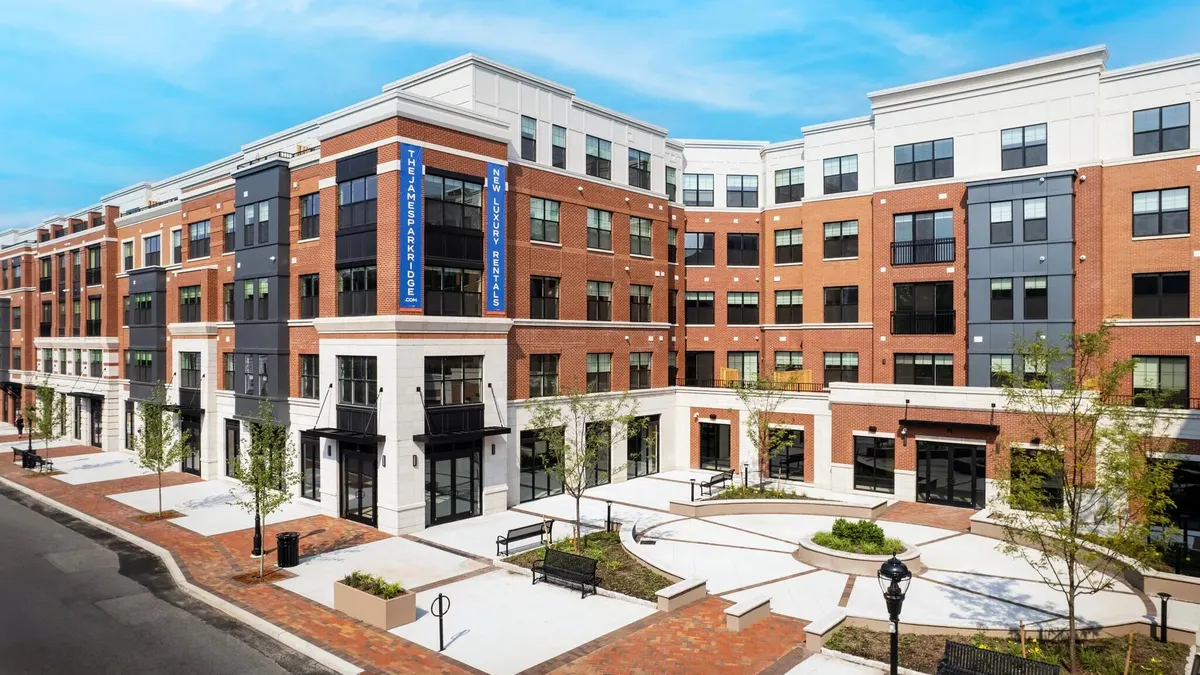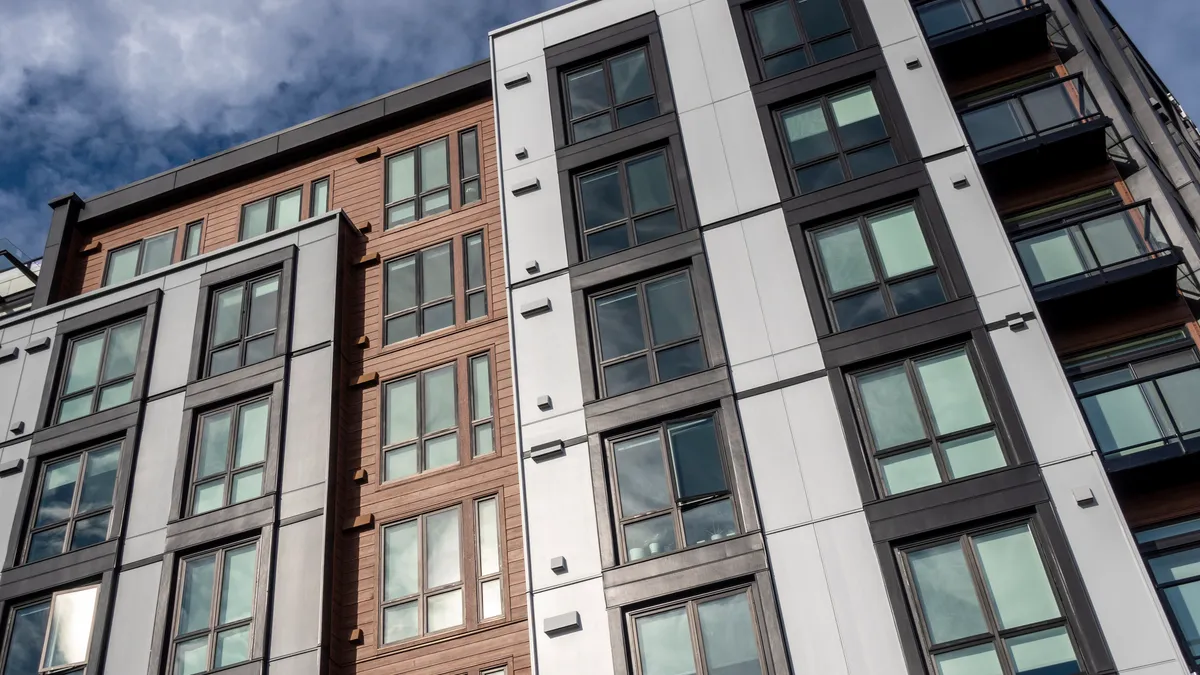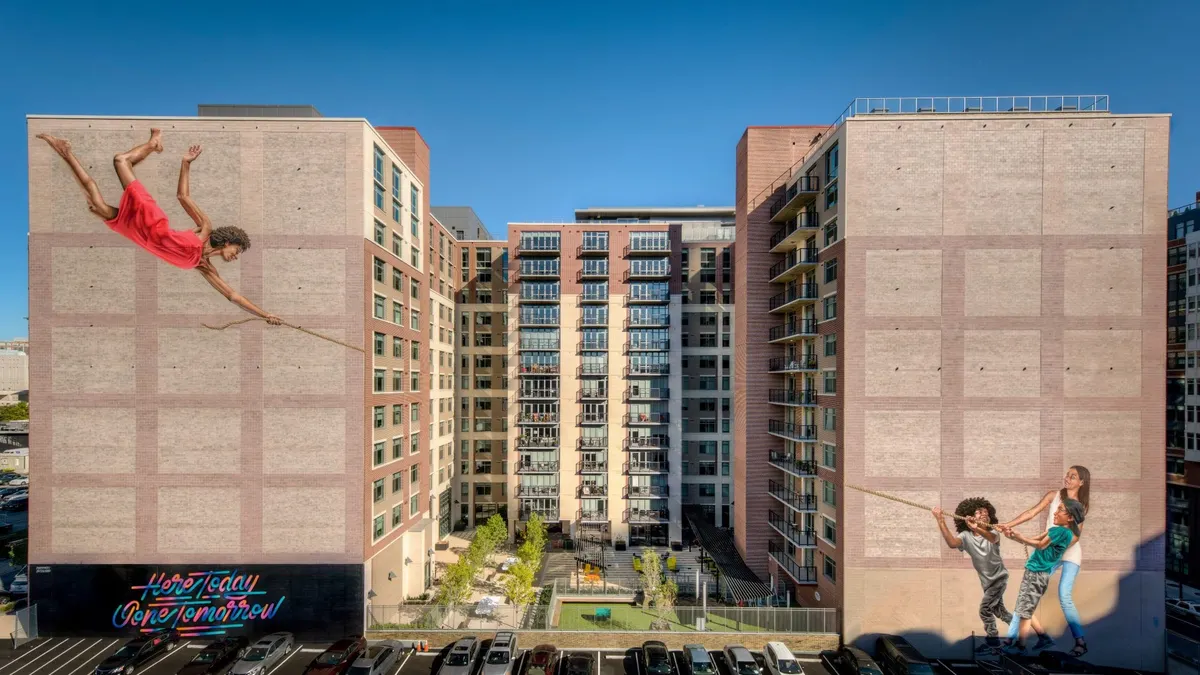In June 2019, Excelsa Properties’ fund Excelsa US Real Estate I and GoldCor Capital Partners purchased Bend at Oak Forest — a 392-unit, garden-style property in Houston's Northwest/Oak Forest submarket.
After buying the community, built in 1972, Excelsa — the Bethesda, Maryland-based U.S. real estate investment arm of Excelsa Holdings — rebranded the property, hired new management and began a deep renovation program. Upgrades included implementing a green energy program, improving landscaping, repairing roofs and refurbishing 57 units by replacing floors and cabinets and installing granite countertops. Three years later, this July, the owners sold the property for a healthy profit.
Now that the acquisitions market is cooling off, David Fletcher, managing director and head of acquisitions at Excelsa, expects to see more buying opportunities for the firm. “Now, we’re working harder because we think we’re better positioned as buyers [than in 2021],” he told Multifamily Dive.
Earlier this year, Excelsa closed its second U.S. multifamily fund with $154 million in equity raised to power those acquisitions. Since its launch in 2009, the firm, which has 2,500 multifamily units, office properties and land, has acquired more than $420 million in U.S. real estate.
Here, Fletcher talks with Multifamily Dive about the acquisition environment, managing rising interest rates and a potential slowdown in the rental market.
This interview has been edited for brevity and clarity.
MULTIFAMILY DIVE: Are you working harder to find and close properties now than a year or so ago?
David Fletcher: We are working harder now because we did not have a chance to buy assets in any auction process run by a broker. So we were buying off market in 2021. In the first quarter of 2022, we were just looking at valuations and saying, “Oh my gosh, how are we going to make this work?”
How is capital market volatility affecting you?
We're dealing with volatility on the 10-year Treasury rate. So, week to week we probably see it move 25 basis points up and down, which has a huge impact when you go from 3% to 2.75%. That's a huge swing.
Do you see any signs of a slowdown in the rental market?
We've seen that it's possible to get ahead of yourselves. We've had periods where leasing slowed, and we had to pull back on our rent growth. We like to maintain strong occupancy. There are times when I've heard that we didn't get any leases, and we’ve had to pull back.
We try to run our renewal rates above 50%. At one of the properties, we are close to 75%. If our renewal rates are dropping and we're not getting new residents in the door, then we're not delivering the value. And so we pull back from those high trade-outs into a more normal zone of 3% to 5% for a couple of weeks. As the market firms and other competitors increase their rates, then we can go back to raising rents. But I think it's slowing down from the conversations we're having with leasing.
Are you trying to reduce downtime by keeping renewals at 50%?
We try to run the occupancy between 94% and 96%. Renters tend to live in apartments for about 18 months on average. So they're moving, they're buying houses and they're doing different things. But if we can deliver value and retain 50% occupancy, it allows us to keep occupancy in a healthy range where we have some opportunity to raise rents and bring in new residents.
With inflation pressures, do you see price sensitivity among your residents?
I think the renewal rate is telling. The highest increase that we've done on renewals is about 7.5%. If we're doing that and seeing that our residents are pulling back or our delinquencies are increasing, then it's an indication that the residents are unable to pay for the rent.
During COVID-19, delinquencies had increased substantially. Now through a combination of government programs, people catching up or unfortunately through evictions, delinquencies are decreasing. Typically across our portfolio, we've had decreasing delinquency and increasing rents together.
It's impossible for residents not to feel high rent increases. In some of these markets, you have new renters coming in who have a different economic base than some of the renters we had two or three years ago.
Click here to sign up to receive multifamily and apartment news like this article in your inbox every weekday.





